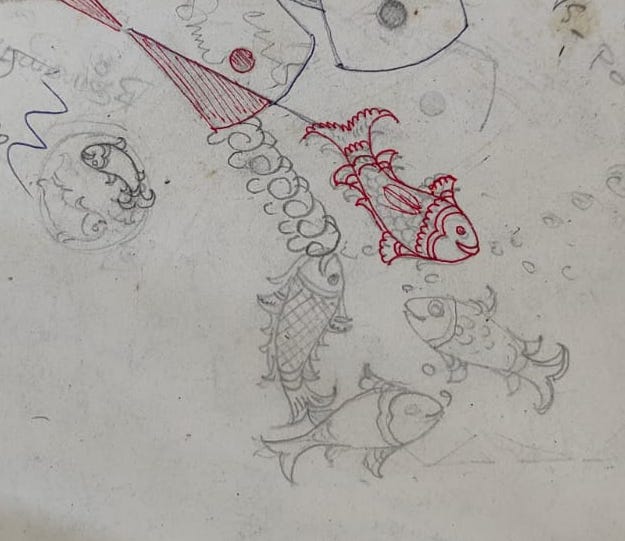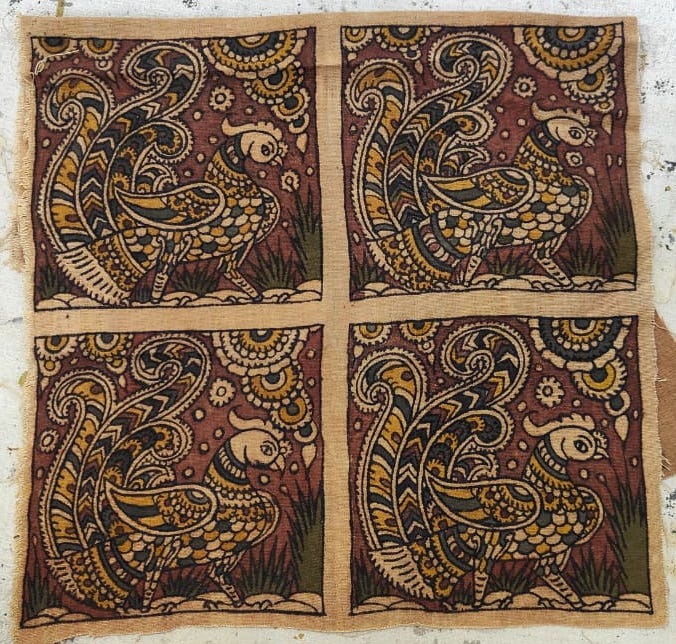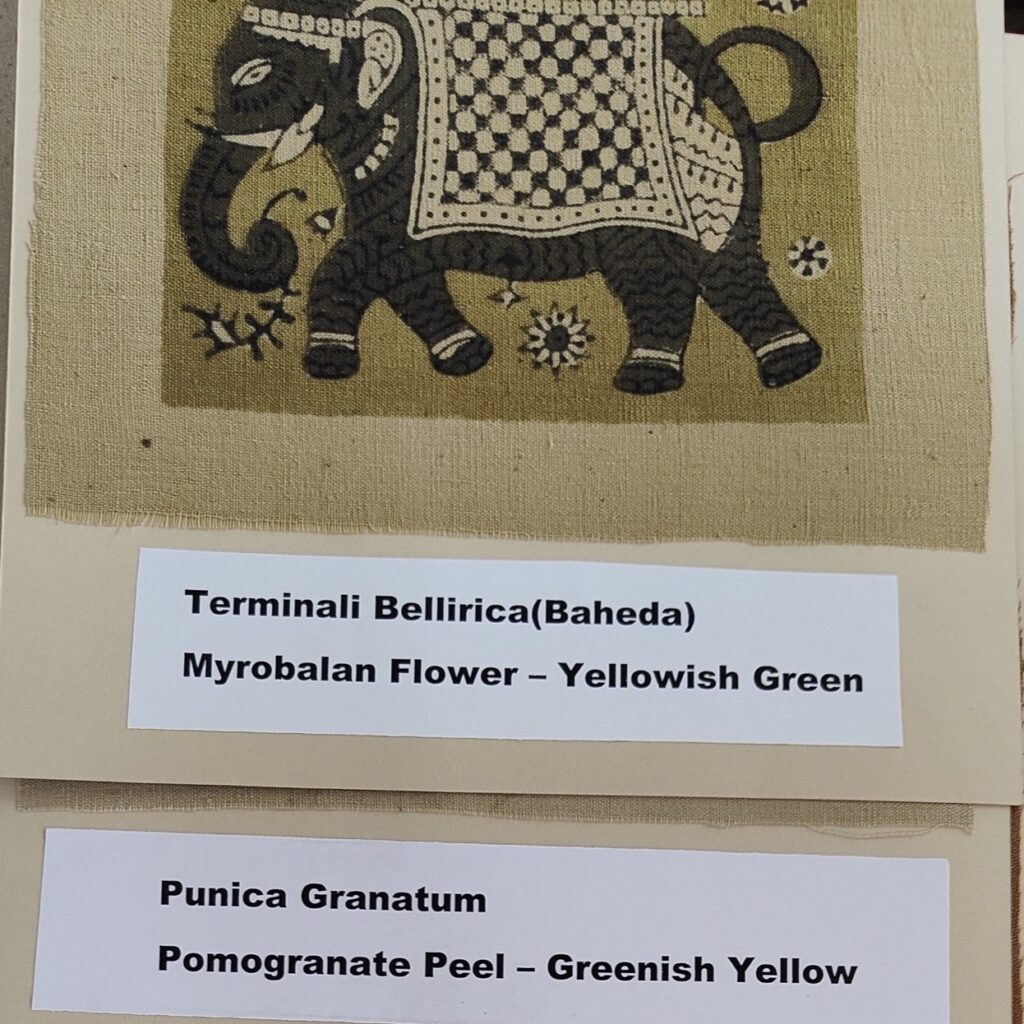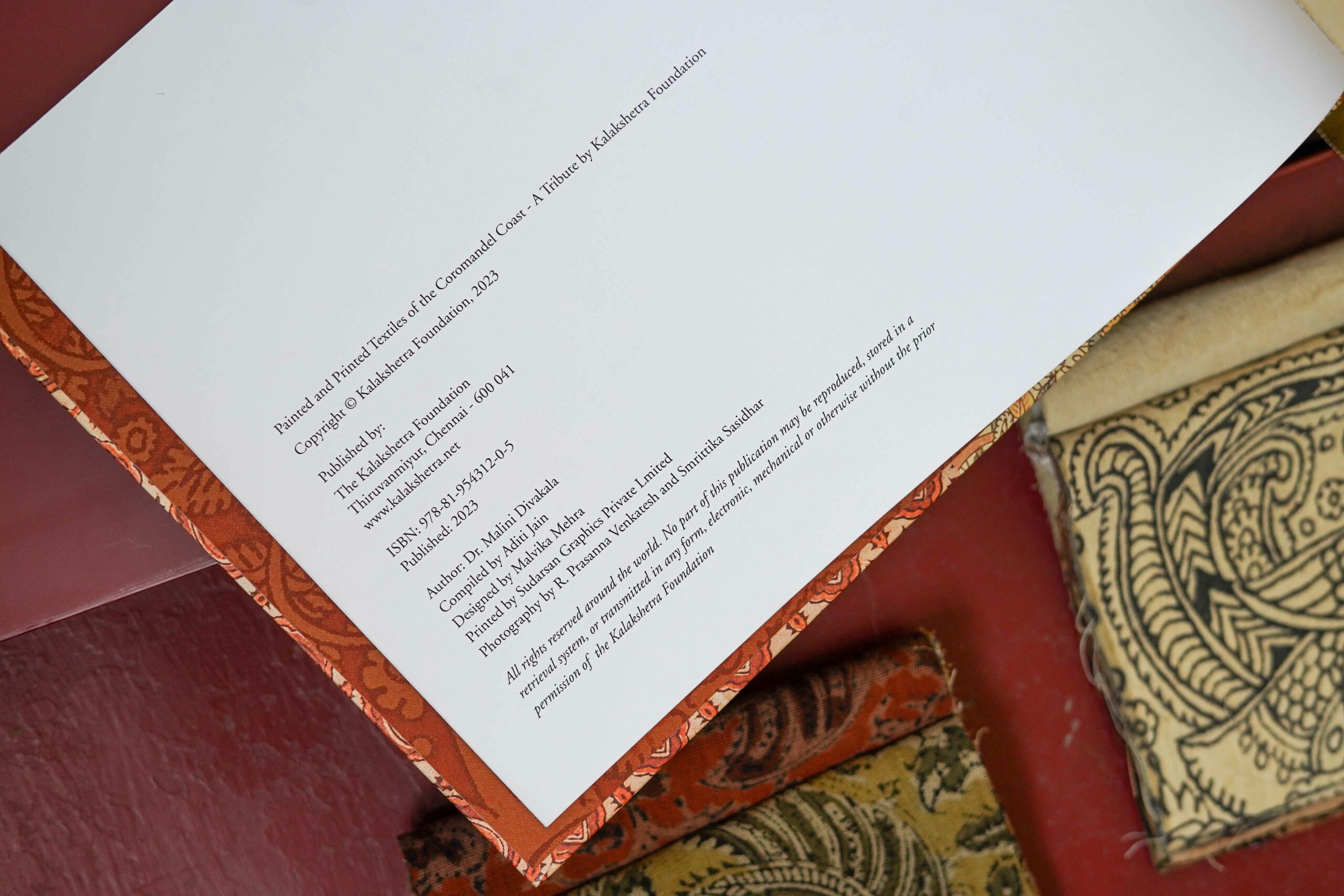The Kalakshetra Foundation holds a special place in my heart. A rich heritage of dance, music, textiles and art forms come alive here because of the vision of Rukmini Devi Arundale. In 1978, the foundation established a Kalamkari unit within its Craft Education and Research Centre (CERC). Skilled artisans from Srikalahasti and Machilipatnam in Andhra Pradesh brought their expertise and breathed life into this age-old craft. Witnessing their skill, both in the delicate art of hand-painting and the intricate process of block printing, was truly inspiring.
For those unfamiliar, kalamkari is a textile art form, literally meaning “pen work” in Telugu. It involves hand-painting or block-printing intricate designs onto textiles using natural dyes. The unit, established with the expertise of artisans from Srikalahasti and Machilipatnam in Andhra Pradesh, has become renowned for its exquisite creations. They experiment beyond the traditional language and explored more contemporary styles and imageries.




I had the incredible opportunity to work with these talented artisans on a book- documenting the various processes involved in kalamkari at Kalakshetra. This involved delving into the research of the author Dr. Malini Divakala, an authority on the subject, and ensuring its accuracy through firsthand observation at the foundation. Fabric swatches were to be included which captures the step-by-step process of both the art forms. The swatches were thoughtfully made on indigenous cotton local to Tamil Nadu called Karunganni cotton. Although the fabric swatches were already complete, they lacked proper finishing to ensure their longevity. To address this, I developed a guidebook on finishing techniques.


Photo by Shakunthala KL

Dr. Divakala’s research sheds light on the fascinating history of kalamkari, revealing two distinct styles. The Vraathapani style involves hand-painted textiles featuring mythological motifs and patterns, traditionally used as temple backdrops. In contrast, the Acchu Adakkam style utilises hand-block printing, a faster technique that emerged in response to the growing demand for the former. Interestingly, this style also reflected Mughal influences from the Nizam rule, adding a unique layer to its visual narrative.

Published by Kalakshetra Foundation
Photo by Shakunthala KL
The final book titled ‘Painted and Printed Textiles at Kalakshetra Foundation’ is available for purchase from the Kalakshetra Foundation. It’s more than just a collection of information; It’s an insight into the dedication, skill, and artistic heritage embodied in every piece of kalamkari created at Kalakshetra. The book is put together beautifully by Malvika Mehra. Truly grateful to Annapurna Mamidipudi for bringing me on board.
If you’re ever in Chennai, I highly recommend visiting the foundation and witnessing the magic of kalamkari firsthand. It’s a truly magical experience.